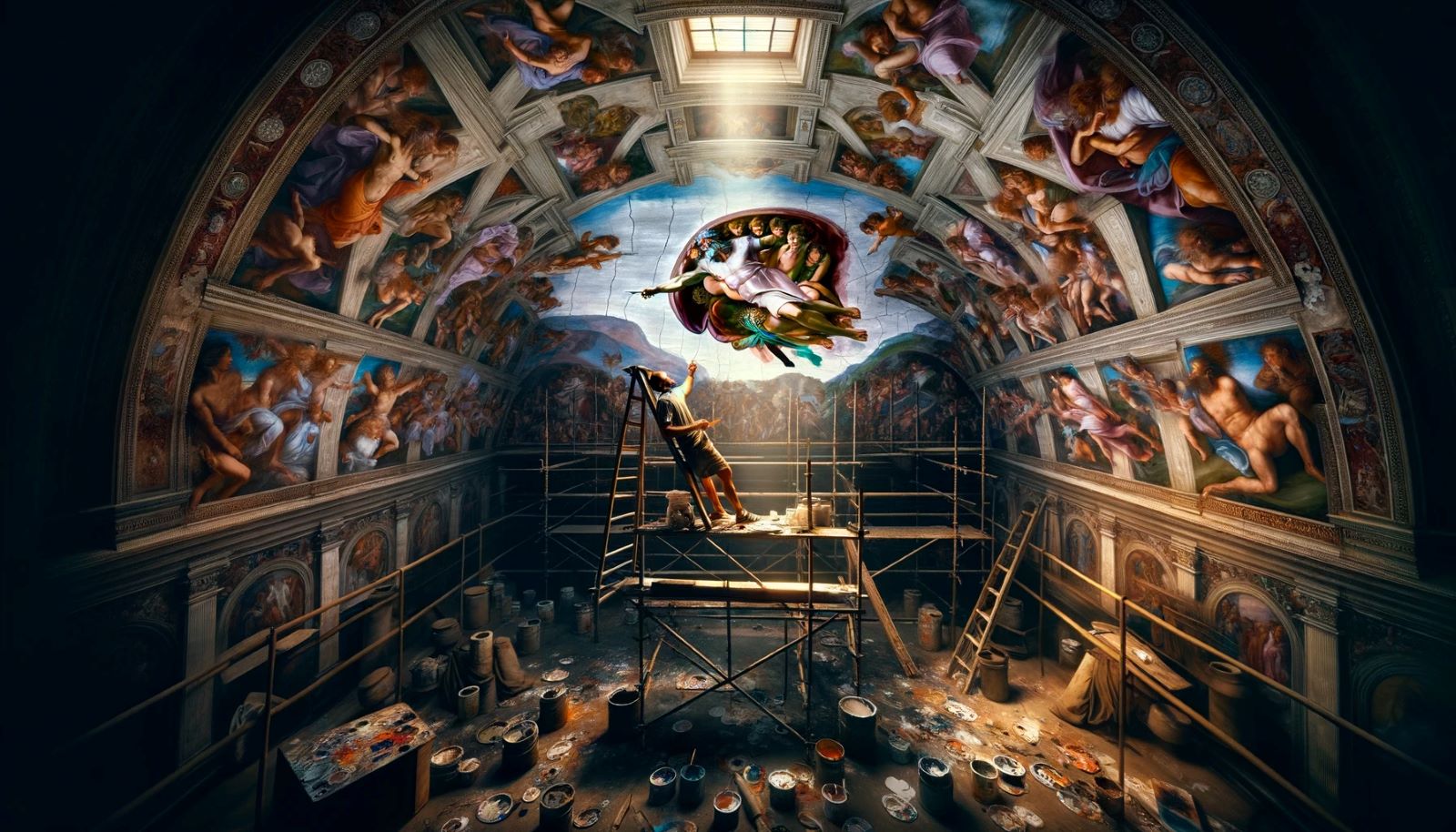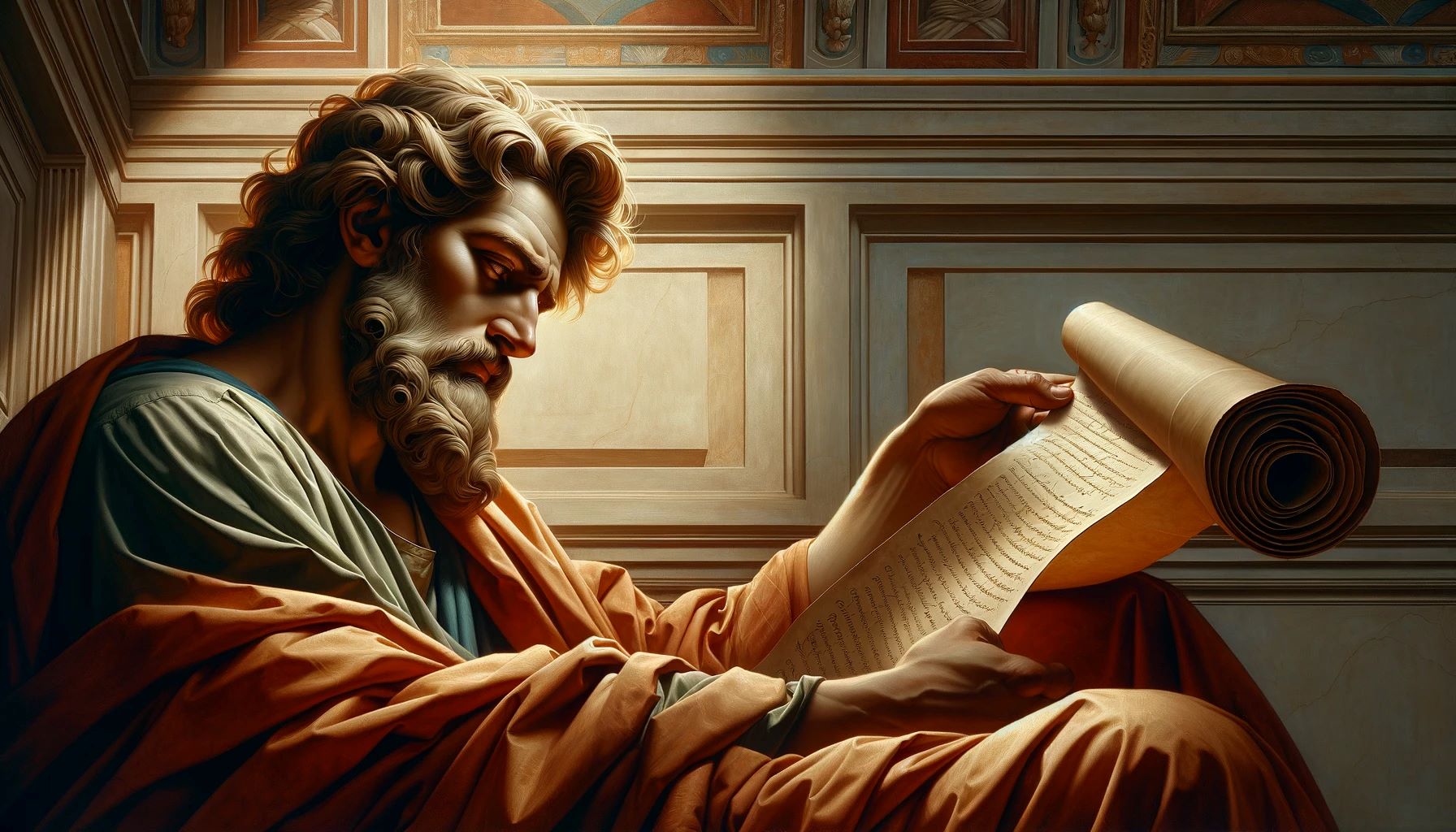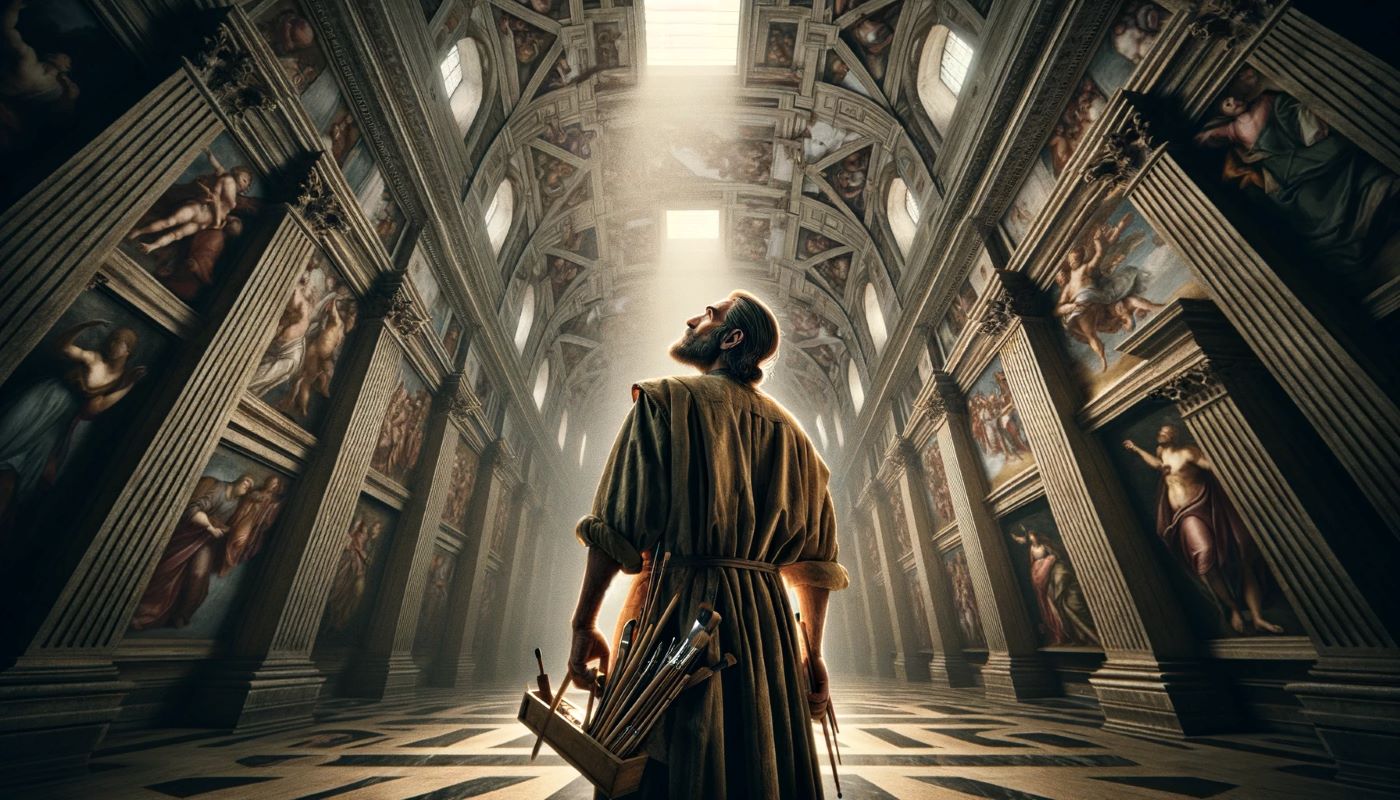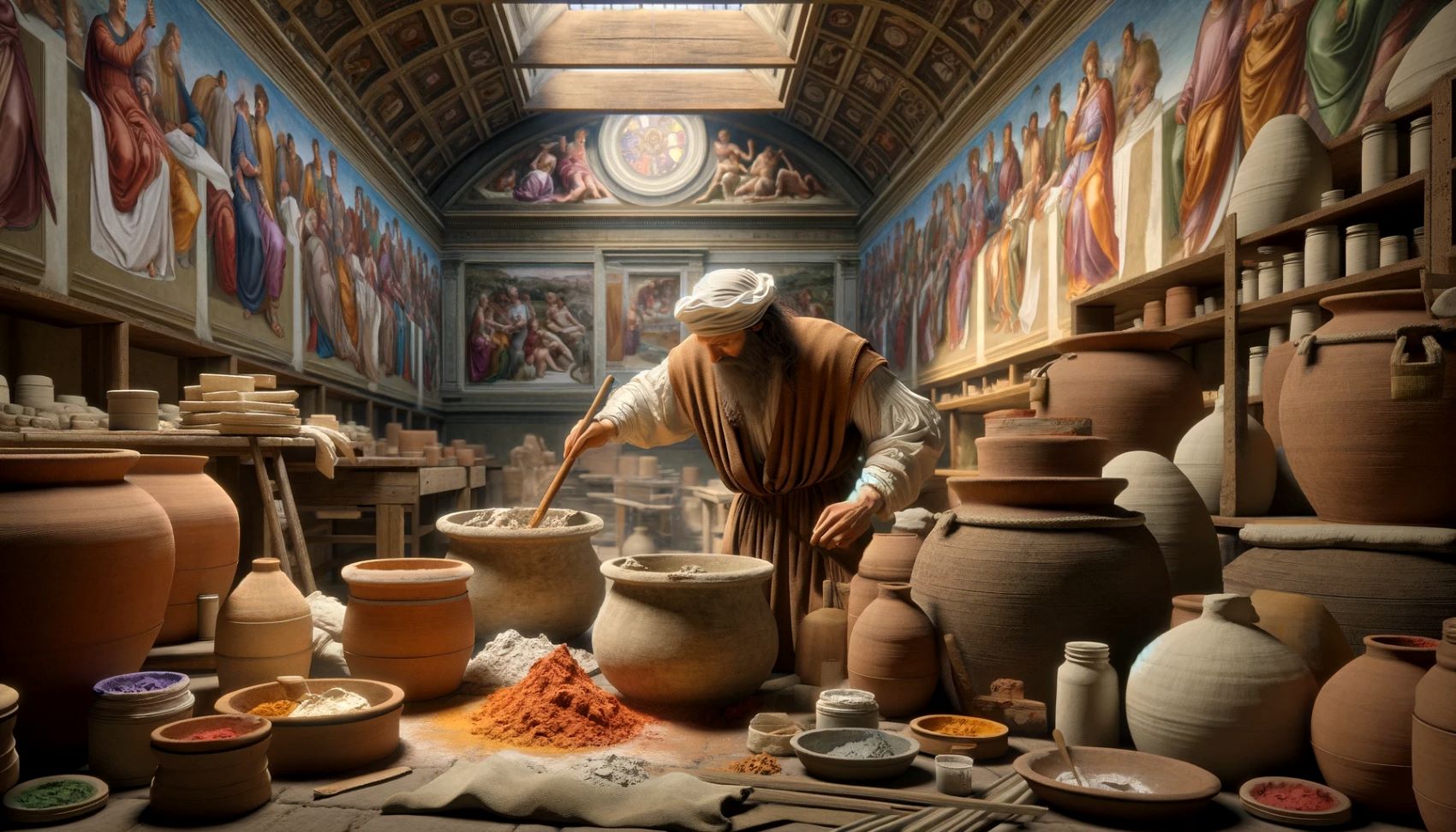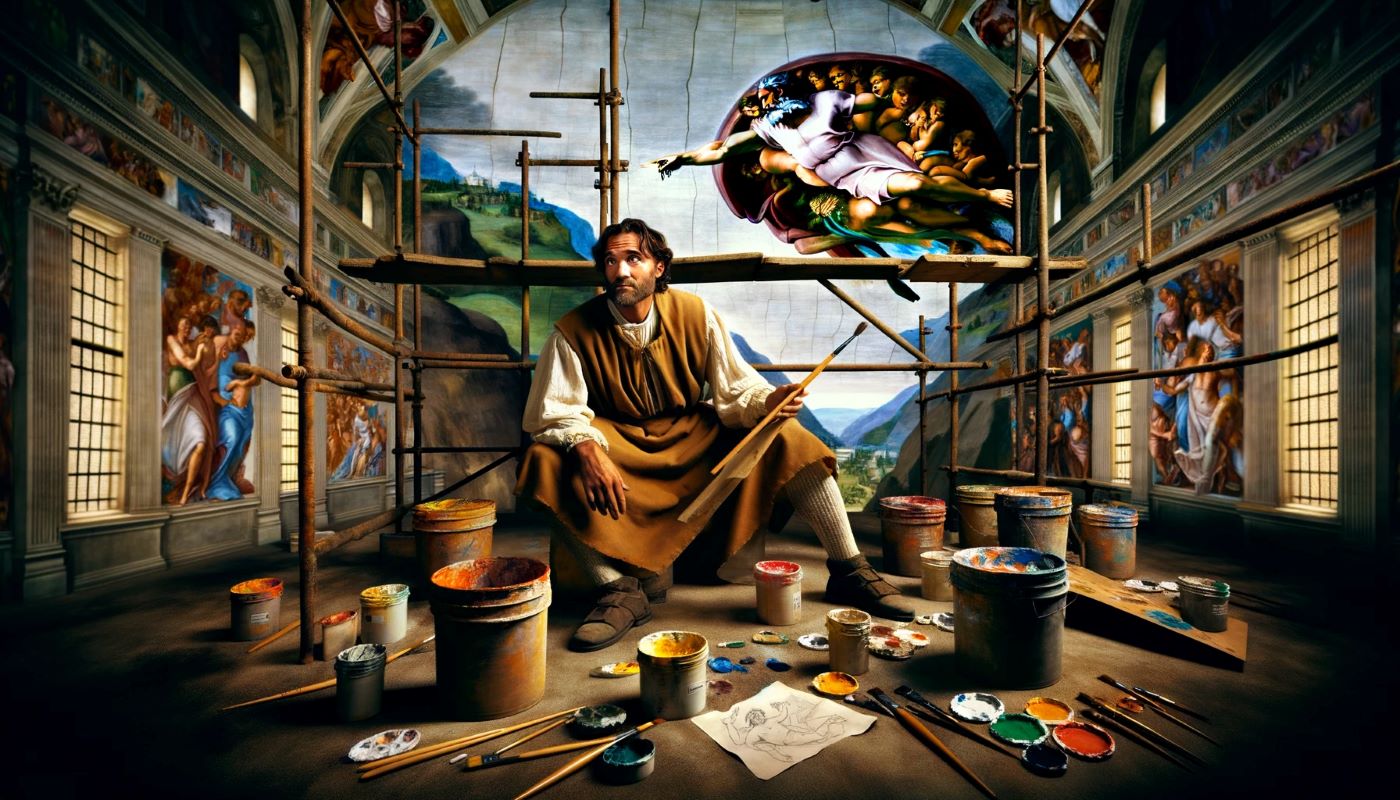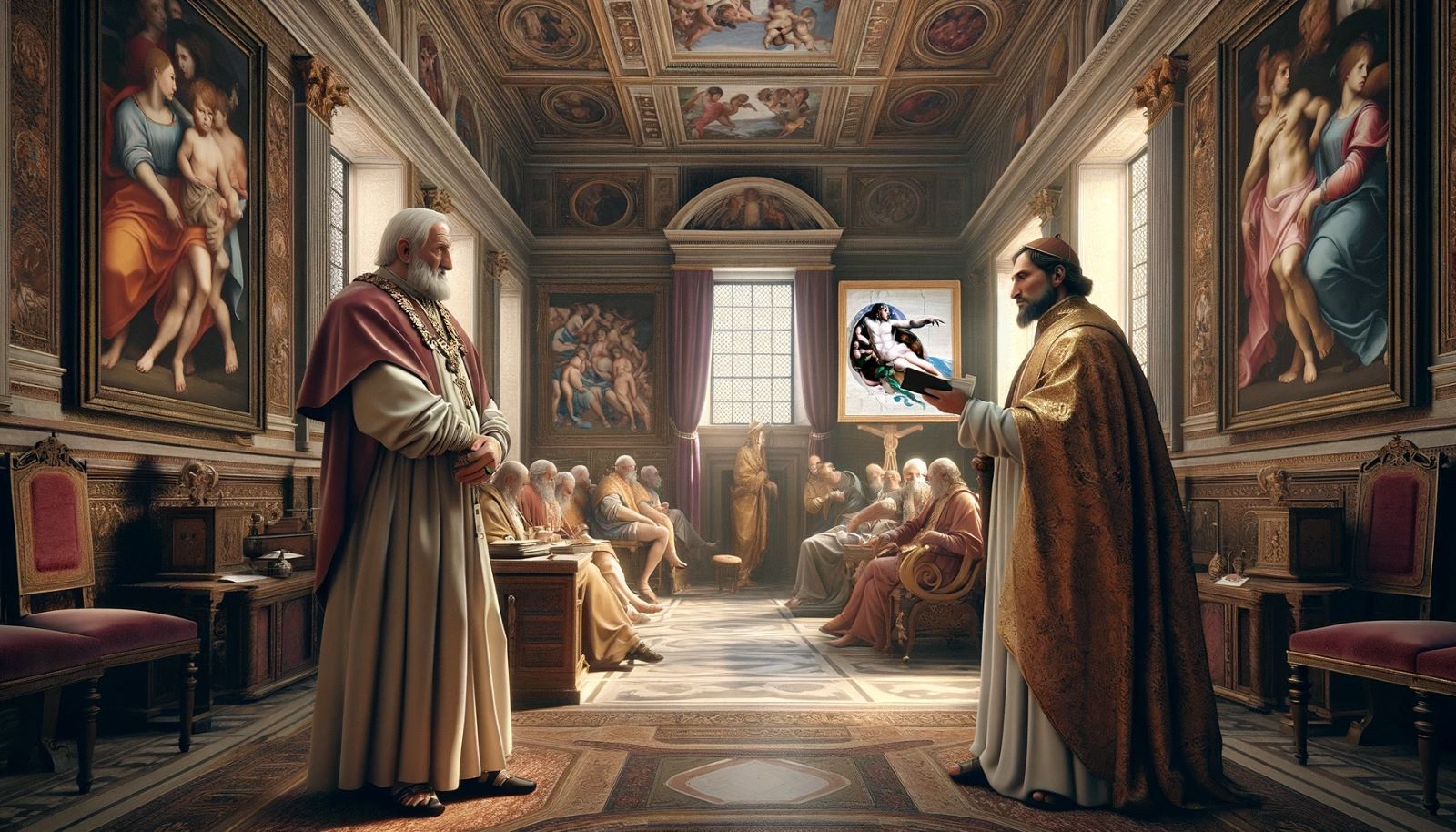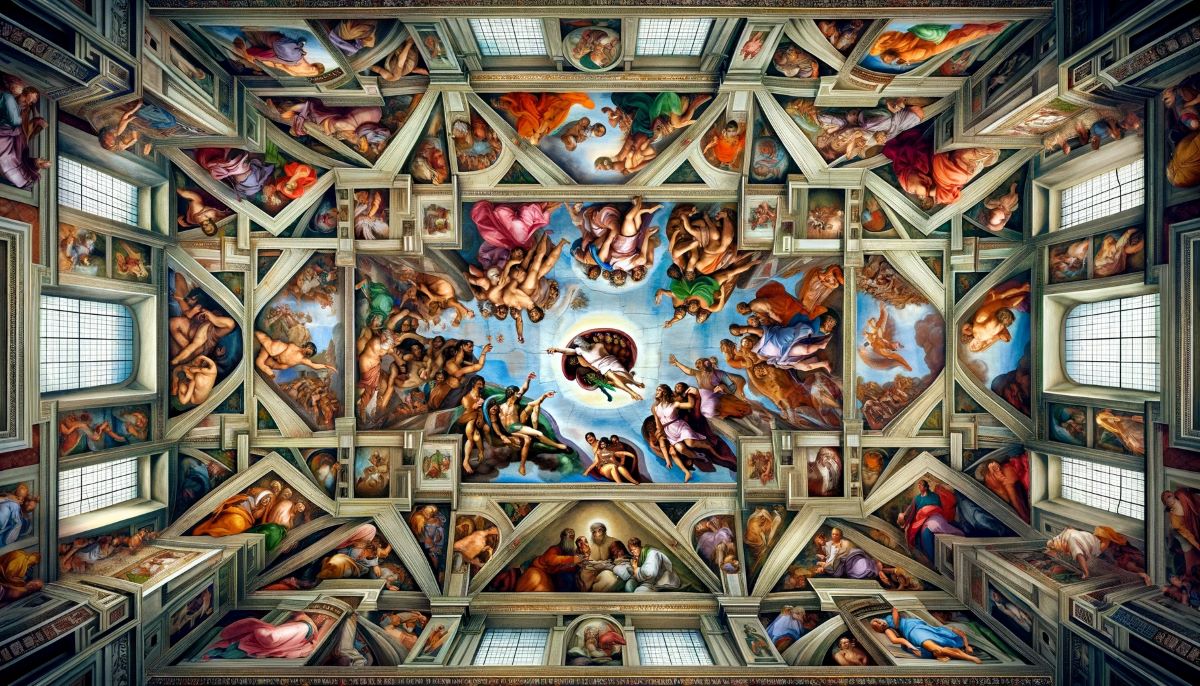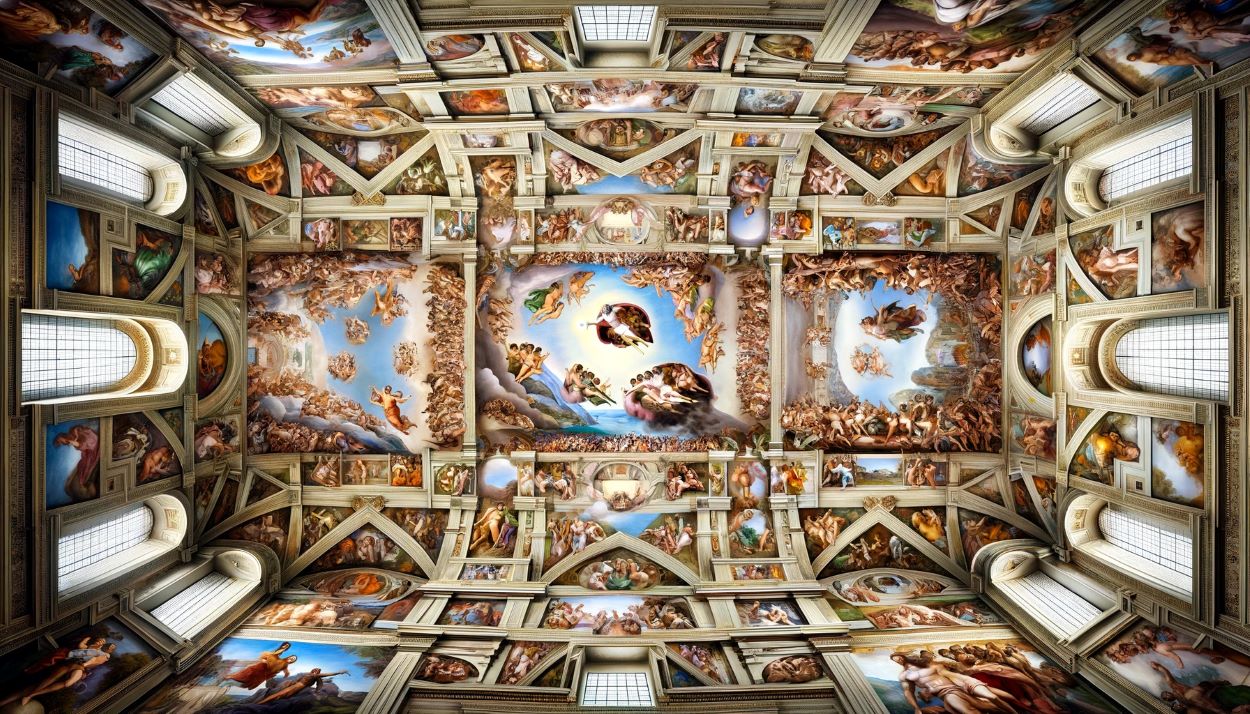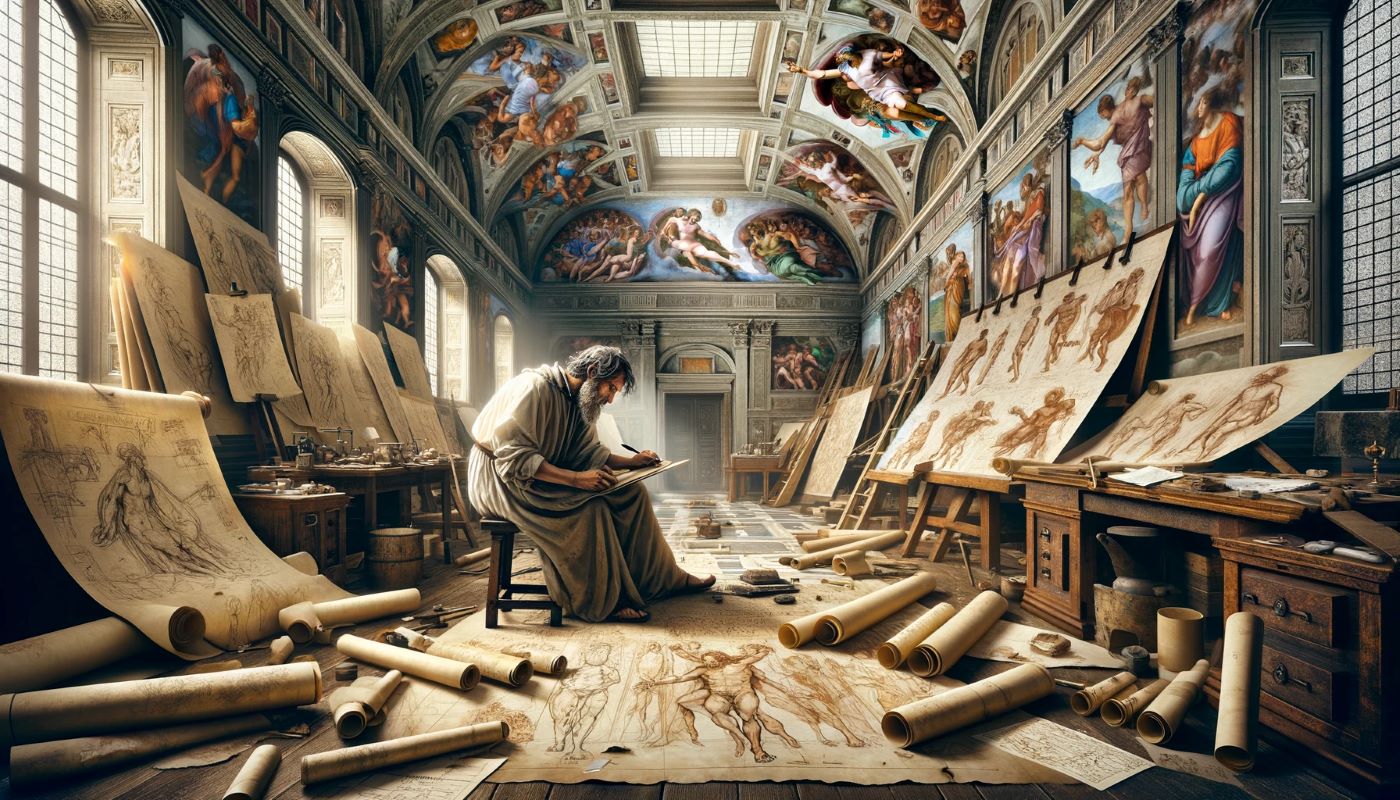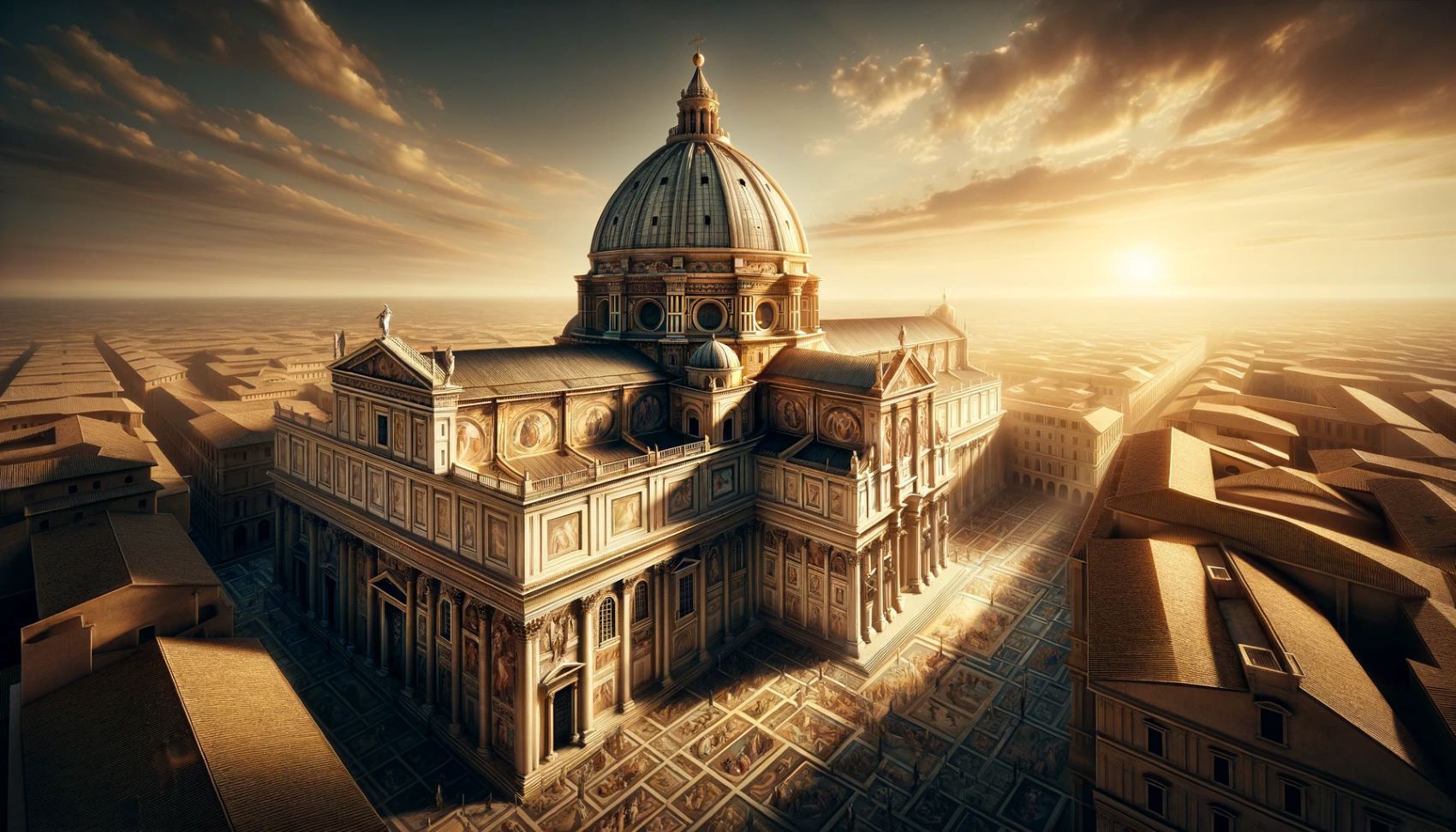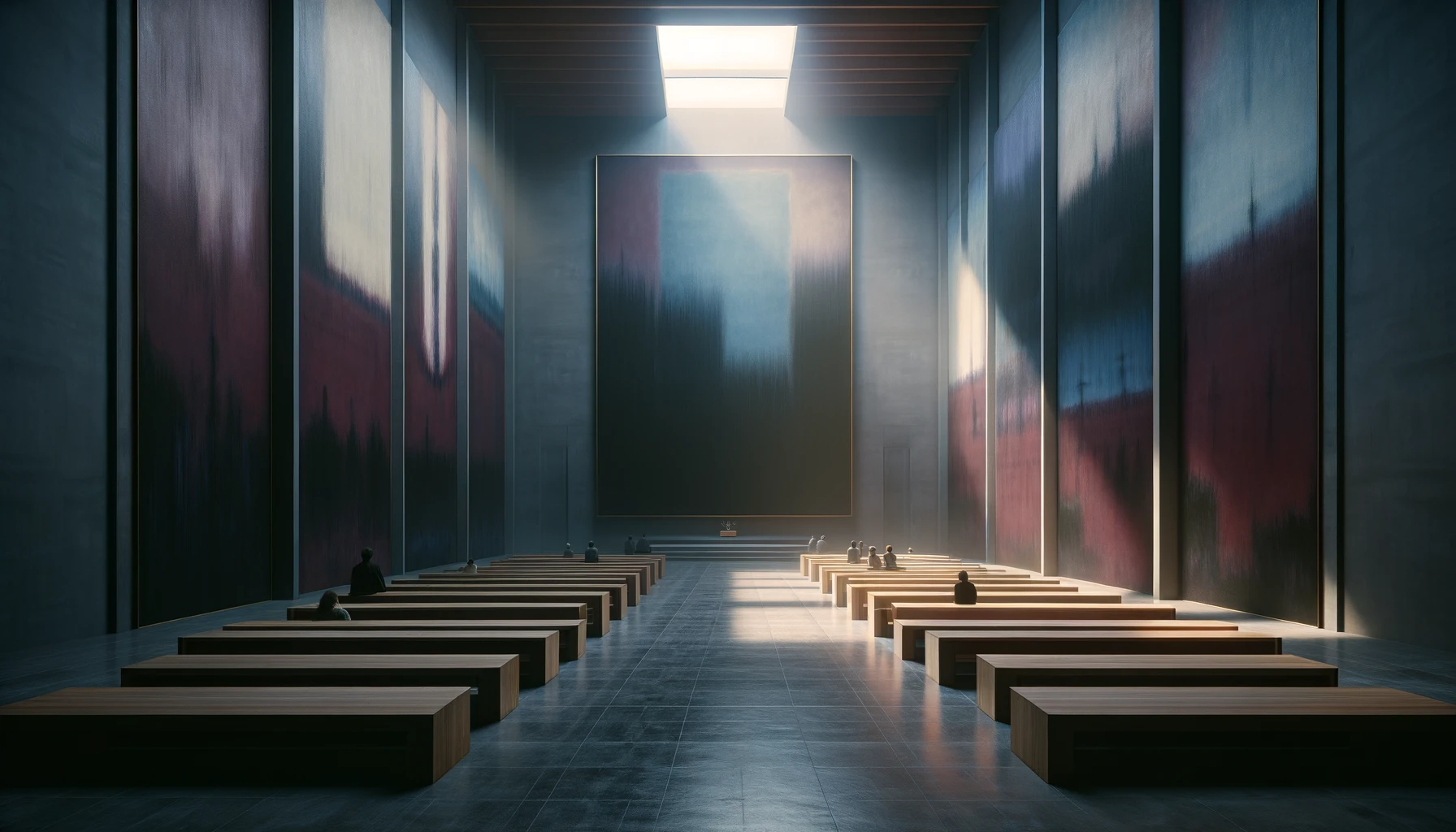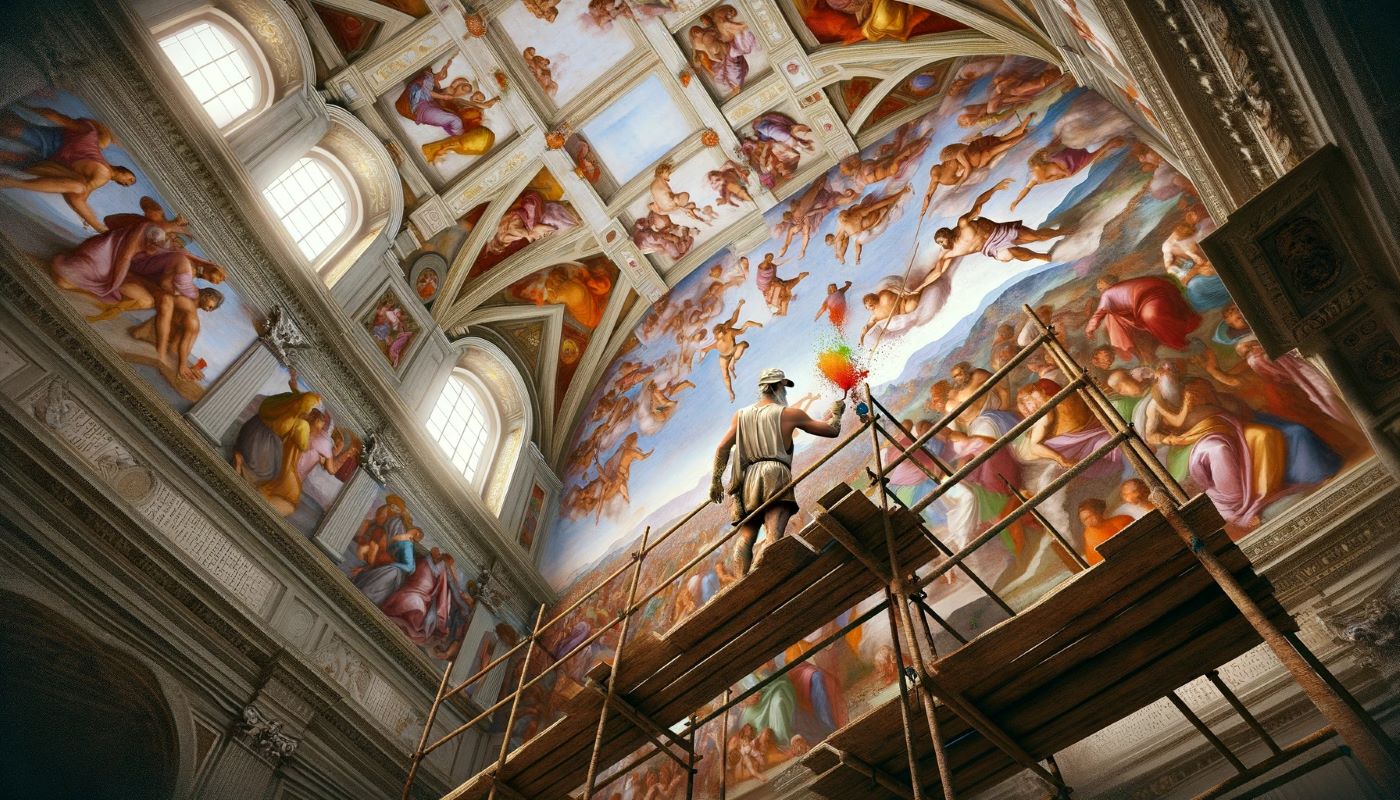Home>Arts and Culture>Why Did Michelangelo Paint The Sistine Chapel?


Arts and Culture
Why Did Michelangelo Paint The Sistine Chapel?
Published: March 4, 2024
Ericka Andersen, an editor at Christian.net, expertly merges digital strategy with content creation, focusing on faith and societal issues. Her communication skills enhance the platform's engaging narratives, fostering meaningful dialogue on belief's impact on society.
Discover the fascinating reasons behind Michelangelo's iconic Sistine Chapel masterpiece and explore the intersection of arts and culture in Renaissance Italy. Uncover the historical and artistic significance of this timeless work.
(Many of the links in this article redirect to a specific reviewed product. Your purchase of these products through affiliate links helps to generate commission for Christian.net, at no extra cost. Learn more)
Table of Contents
The Commissioning of the Sistine Chapel
The Sistine Chapel, located in Vatican City, is renowned for its stunning frescoes, including the iconic ceiling painted by Michelangelo. But why did Michelangelo paint the Sistine Chapel in the first place? The answer lies in the commissioning of this masterpiece. In the early 16th century, Pope Julius II commissioned Michelangelo to decorate the ceiling of the Sistine Chapel. The pope sought to restore the chapel's grandeur and elevate its significance as a site for papal ceremonies and the election of new popes. This ambitious project was a testament to the pope's desire to showcase the power and authority of the Catholic Church through the magnificence of art and architecture.
The commissioning of the Sistine Chapel marked a pivotal moment in the history of Renaissance art and the Catholic Church. It provided Michelangelo with an extraordinary opportunity to demonstrate his artistic prowess while contributing to the spiritual and cultural enrichment of the Church. This monumental task not only solidified Michelangelo's legacy as one of the greatest artists of all time but also transformed the Sistine Chapel into a timeless symbol of human creativity and religious devotion.
Michelangelo's Artistic Vision for the Sistine Chapel
-
Depiction of Biblical Stories: Michelangelo's artistic vision for the Sistine Chapel was deeply rooted in his interpretation of biblical narratives. Through his masterful brushstrokes, he sought to bring these stories to life, capturing the essence of divine creation, the fall of man, and the ultimate redemption through the life of Jesus Christ. Each panel on the ceiling and the altar wall was meticulously crafted to convey the spiritual significance of these narratives, inviting viewers to contemplate the profound teachings of the Christian faith.
-
Celebration of Human Form: One of the most striking aspects of Michelangelo's vision was his celebration of the human form. The figures depicted in the Sistine Chapel exude a sense of strength, beauty, and emotional depth, reflecting the artist's reverence for the human body as a reflection of God's divine craftsmanship. Through his meticulous attention to anatomical detail and expressive poses, Michelangelo elevated the human form to a symbol of spiritual and physical perfection, underscoring the inherent dignity of humanity in the eyes of God.
-
Integration of Architecture and Painting: Michelangelo's artistic vision extended beyond traditional painting techniques. He skillfully integrated the architectural elements of the chapel into his compositions, creating a seamless visual experience that transcended the boundaries of two-dimensional art. The architectural framework of the chapel, including the placement of windows, arches, and moldings, became an integral part of Michelangelo's design, enhancing the overall impact of his frescoes and establishing a harmonious dialogue between art and architecture.
-
Elevation of the Sacred Space: Through his artistic vision, Michelangelo aimed to elevate the Sistine Chapel into a sacred space that transcended earthly confines. The ethereal quality of his paintings, combined with the architectural grandeur of the chapel, created an immersive environment that transported visitors to a realm of spiritual contemplation and awe. Michelangelo's meticulous attention to detail and his ability to infuse the chapel with a sense of divine presence transformed it into a sanctuary where the divine and the human intersected in a profound and transcendent manner.
-
Inspiration for Future Generations: Michelangelo's artistic vision for the Sistine Chapel continues to inspire artists, theologians, and visitors from around the world. His innovative approach to storytelling, his reverence for the human form, and his seamless integration of art and architecture have left an indelible mark on the history of art and religious expression. The Sistine Chapel stands as a testament to Michelangelo's enduring legacy, inviting viewers to marvel at the intersection of artistic genius and spiritual devotion.
The Religious and Cultural Context of the Sistine Chapel
-
Spiritual Center of the Catholic Church: The Sistine Chapel holds immense religious significance as the site of papal conclaves and important liturgical ceremonies. Its role as a spiritual center for the Catholic Church underscores the profound religious context in which Michelangelo's masterpieces were created. The chapel's function as a place of worship and papal authority imbued Michelangelo's work with a sacred purpose, elevating the religious and cultural significance of the entire artistic endeavor.
-
Renaissance Humanism and Christian Faith: The period in which the Sistine Chapel was adorned with Michelangelo's frescoes was characterized by the flourishing of Renaissance humanism, a movement that celebrated the potential of human achievement and intellect. This cultural backdrop influenced Michelangelo's artistic approach, as he skillfully integrated humanist ideals with Christian themes in his depictions of biblical narratives. The fusion of humanist philosophy and Christian faith within the Sistine Chapel's artistic repertoire reflects the dynamic interplay between cultural trends and religious expression during the Renaissance era.
-
Papal Patronage and Artistic Patronage: The commissioning of the Sistine Chapel by Pope Julius II exemplifies the tradition of papal patronage, wherein the Church supported and sponsored artistic endeavors as a means of promoting religious teachings and commemorating the grandeur of the faith. This intersection of religious authority and artistic patronage underscores the close relationship between the Catholic Church and the artistic production of the Renaissance period. The Sistine Chapel stands as a testament to the enduring legacy of papal patronage and its profound impact on the cultural and religious landscape of the time.
-
Symbolism and Theological Reflection: Michelangelo's frescoes in the Sistine Chapel are replete with symbolism and theological reflection, serving as visual representations of key Christian doctrines and narratives. The intricate details and symbolic elements woven into the artwork convey profound theological truths and invite contemplation on the part of the viewers. The religious and cultural context of the Sistine Chapel provided Michelangelo with a rich tapestry of theological themes and symbolic imagery to draw upon, enabling him to create a visual testament to the depth and complexity of Christian belief.
-
Cultural Dialogue and Artistic Innovation: The Sistine Chapel serves as a testament to the cultural dialogue and artistic innovation that characterized the Renaissance period. The fusion of classical influences, Christian theology, and humanist ideals within the chapel's artistic program reflects the vibrant exchange of ideas and artistic techniques that defined the era. Michelangelo's engagement with the religious and cultural context of his time resulted in a body of work that transcended artistic conventions, leaving an indelible mark on the history of art and religious expression.
In essence, the religious and cultural context of the Sistine Chapel provided a fertile ground for Michelangelo to infuse his art with profound spiritual meaning, cultural resonance, and artistic innovation, thereby creating a timeless masterpiece that continues to inspire and captivate audiences across the globe.
The Process of Painting the Sistine Chapel
-
Preparation and Planning: Before commencing the monumental task of painting the Sistine Chapel, Michelangelo meticulously planned and prepared for the execution of his artistic vision. He studied the architectural layout of the chapel, taking into account the placement of windows, arches, and the curvature of the ceiling. This careful consideration allowed him to adapt his designs to the unique spatial constraints of the chapel, ensuring a harmonious integration of his frescoes with the chapel's architectural elements.
-
Preparation of the Surface: The process of painting the Sistine Chapel began with the preparation of the ceiling's surface. Michelangelo and his team of assistants meticulously applied a layer of intonaco, a rough plaster mixture, to the ceiling. This preparatory layer provided the foundation for the fresco technique, allowing the pigments to bond with the plaster and become an integral part of the surface.
-
Creation of Full-Scale Cartoon: To transfer his designs onto the ceiling, Michelangelo created full-scale cartoons, or detailed preparatory drawings, outlining the compositions of the frescoes. These cartoons served as a guide for the execution of the paintings, enabling Michelangelo to transfer his intricate designs onto the curved surface of the ceiling with precision and accuracy.
-
Execution of Frescoes: Armed with his cartoons and a profound mastery of the fresco technique, Michelangelo embarked on the arduous task of painting the Sistine Chapel. Working atop scaffolding, he applied pigments mixed with water onto the damp intonaco, a technique known as fresco. This method required swift and precise execution, as the pigments had to be applied before the intonaco dried, ensuring their seamless integration with the plaster surface.
-
Challenges and Perseverance: The process of painting the Sistine Chapel was fraught with numerous challenges, including the physical demands of working at great heights, the meticulous attention to detail required for the intricate compositions, and the constraints imposed by the chapel's architectural features. Despite these obstacles, Michelangelo demonstrated unwavering perseverance, devoting four years of intense labor to complete the ceiling and altar wall frescoes.
-
Innovative Techniques and Artistic Brilliance: Throughout the process, Michelangelo employed innovative techniques to achieve his artistic vision. His mastery of foreshortening, the skillful manipulation of perspective, and his ability to convey emotional depth through the depiction of human figures elevated the frescoes to unprecedented levels of artistic brilliance, setting a new standard for the portrayal of biblical narratives in visual art.
-
Legacy of the Process: The process of painting the Sistine Chapel stands as a testament to Michelangelo's unparalleled artistic genius, his unwavering dedication to his craft, and his ability to transcend the limitations of his time. The completion of this monumental undertaking not only solidified Michelangelo's reputation as a master of the Renaissance but also left an enduring legacy that continues to inspire awe and admiration for centuries to come.
The Legacy of Michelangelo's Sistine Chapel
-
Artistic Inspiration: The Sistine Chapel stands as a timeless source of artistic inspiration, influencing generations of artists across diverse disciplines. Michelangelo's innovative approach to storytelling, his mastery of human anatomy, and his ability to infuse profound emotion into his compositions have set a standard for artistic excellence that continues to resonate in the contemporary art world.
-
Spiritual and Cultural Icon: As a symbol of religious devotion and cultural achievement, the Sistine Chapel remains an enduring icon of human creativity and spiritual aspiration. Its significance transcends religious boundaries, captivating the imagination of people from all walks of life and serving as a testament to the power of art to elevate the human spirit.
-
Architectural Integration: Michelangelo's seamless integration of painting and architecture within the Sistine Chapel has left an indelible mark on the relationship between art and built environments. His ability to harmonize the visual elements of the chapel with his frescoes has influenced architectural design and spatial aesthetics, underscoring the enduring impact of his artistic vision on the built environment.
-
Theological Reflection: The theological depth and symbolic richness of the Sistine Chapel's frescoes continue to invite scholarly inquiry and theological reflection. Michelangelo's visual interpretations of biblical narratives have sparked profound discussions on the intersection of art, faith, and religious interpretation, contributing to ongoing dialogues on the role of visual culture in shaping religious understanding.
-
Cultural Heritage: The Sistine Chapel, as a UNESCO World Heritage site, stands as a testament to the preservation of cultural heritage and the enduring legacy of Renaissance art. Its conservation and ongoing significance as a site of pilgrimage and artistic pilgrimage underscore its role as a custodian of human history and artistic achievement.
-
Global Impact: The global impact of the Sistine Chapel extends beyond the confines of Vatican City, drawing millions of visitors from around the world to marvel at its artistic splendor. Its influence on popular culture, literature, and the collective imagination of humanity underscores its status as a global cultural treasure.
In essence, the legacy of Michelangelo's Sistine Chapel transcends the boundaries of art and religion, leaving an indelible mark on the cultural landscape of the world. Its enduring significance as a masterpiece of human creativity and spiritual expression ensures that Michelangelo's legacy will continue to inspire and captivate future generations.
